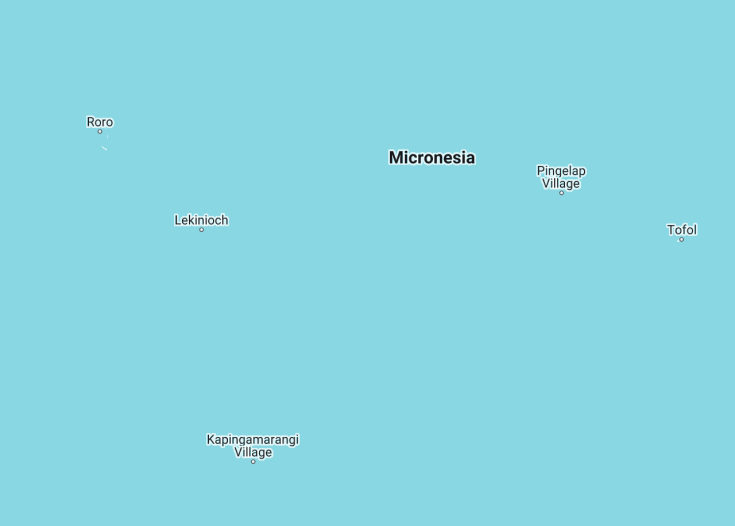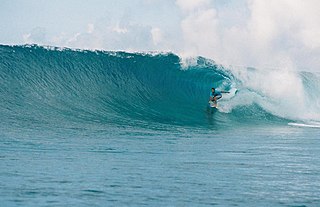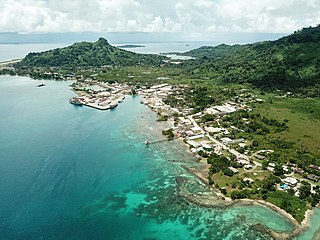Micronesia is a tropical paradise consisting of thousands of islands in the Pacific Ocean. With crystal-clear waters, pristine beaches, and vibrant coral reefs, this destination offers a unique and unforgettable experience for visitors. Whether you’re interested in diving, snorkeling, or simply relaxing on the beach, Micronesia has it all.
When visiting Micronesia, make sure to explore the stunning underwater world by going on a diving or snorkeling excursion. The colorful coral reefs and diverse marine life will leave you awe-struck.
For an authentic cultural experience, consider visiting some of the traditional villages in Micronesia. Immerse yourself in the rich local culture, try traditional cuisine, and learn about the unique customs and traditions of the Micronesian people.
How to best experience Micronesia?
Search for Tickets, tours, and activities in Micronesia using direct search on the following providers:
GetYourGuide.com Viator.com Trip.com Expedia.com Tiqets.com Ctrip.com (中文)
Top cities to visit in Micronesia
Discover the best cities of Micronesia and best places to visit.
Micronesia: the mosaic of Pacific islands
| Capital | Palikir |
| Time in Micronesia | GMT+11 |
| Language spoken | English |
| Population | 104,468 (source: World Bank, 2021) |
| Religion | Roman Catholic (54.7%) Protestantism (41.7%) Other (3.6%) |
| Currency | US Dollar ($, USD) |
| Airports | Chuuk International Airport Yap International Airport Pohnpei International Airport Kosrae International Airport |
Micronesia, a realm of endless blue and scattered coral atolls, stands as a testament to the tranquil beauty of the Pacific. Comprising over 600 islands, this sprawling region offers a captivating blend of nature, culture, and history that beckons the discerning traveler. The intricacies of its ancient seafaring cultures, combined with its pristine underwater wonders, create an unparalleled experience for those seeking the authentic essence of the Pacific.
The historical tales of Micronesia are as vast as its waters. With evidence of human settlement dating back over 3,000 years, these islands have witnessed the ebb and flow of various cultures, including the Chamorro, Yapese, and Chuukese. Each island and atoll has its stories, from ancient stone cities to remnants of World War II battles.
For the adventurous traveler, Micronesia presents unparalleled snorkeling and diving opportunities. Its marine sanctuaries, teeming with marine life from manta rays to colorful reef fish, are a diver’s dream. The sunken warships and aircraft, remnants of the fierce battles of World War II, add an aura of mystery to these azure waters. On land, the traditional dances, crafts, and ceremonies provide a deep dive into the region’s cultural heartbeat.
Where is Micronesia located?
Micronesia is located in the western Pacific Ocean, northeast of New Guinea. It comprises numerous small islands and atolls spread over a large expanse of the north-central Pacific.
What is Micronesia famous for?
Micronesia is renowned for its stunning coral reefs, diving sites, including World War II wrecks, and rich cultural traditions. The ancient stone structures of Nan Madol and traditional Yapese stone money are among its unique cultural highlights.
History
Early Settlement: Circa 2000 BC – 500 AD
The Federated States of Micronesia, an island nation situated in the western Pacific Ocean, has been inhabited for over 4,000 years. The earliest settlers were the Austronesian-speaking people, who migrated from Southeast Asia and established themselves on the islands, developing a complex maritime culture, building impressive stone structures, and refining navigation techniques.
Contact with Nearby Island Civilizations: 500 AD – 1500 AD
The inhabitants of Micronesia maintained active trade and cultural connections with neighboring island regions such as Polynesia and Melanesia. These exchanges enriched Micronesian societies, leading to the evolution of distinct languages, customs, and traditions. The famous stone city of Nan Madol on Pohnpei island, with its intricate canal systems and towering stone walls, emerged as a significant center during this period.
European Exploration: 1521 – 1800
European contact began in the early 16th century when Portuguese explorer Ferdinand Magellan landed on the islands during his circumnavigation voyage. Over the next few centuries, various European explorers, including Spanish, Dutch, and British, visited the islands, leading to increased trade, the spread of Christianity, and, unfortunately, the introduction of diseases that devastated local populations.
Colonial Era: 19th Century – Mid 20th Century
The Spanish Empire claimed the islands in the late 19th century and subsequently sold them to Germany in 1899. German administration focused on economic exploitation, particularly in copra production. However, their control was short-lived, as Japan took over the islands during World War I. Under Japanese rule, Micronesia experienced significant infrastructure development. However, the islands became strategic military sites during World War II, particularly for the Japanese defense against American forces. After intense battles, the US emerged victorious and assumed control of Micronesia.
United States Trusteeship and Independence: 1947 – 1986
After World War II, the United Nations established the Trust Territory of the Pacific Islands, with the United States as the trustee. The islands saw considerable socio-economic changes, with investments in education, healthcare, and infrastructure. Over time, there was a growing desire for self-determination among the Micronesians. After several referendums and negotiations, the Federated States of Micronesia became a sovereign nation in 1986, entering into a Compact of Free Association with the US, which offers military protection and economic assistance in return for strategic military rights in the region.
Modern Era: 1986 – Present
Since gaining sovereignty, Micronesia has navigated the challenges of nationhood, maintaining its cultural heritage while integrating with the global community. The country remains in a unique relationship with the US through the Compact of Free Association. In recent times, Micronesia faces challenges related to climate change, with rising sea levels threatening its very existence. Nonetheless, the nation continues to advocate for global environmental responsibility and remains a vibrant testimony to Pacific Islander resilience and heritage.
Visit Micronesia
What to see and do in Micronesia
When visiting Micronesia, there are a plethora of attractions and activities to keep you enthralled throughout your stay. Here are some of the top things to see and do in Micronesia:
- Explore the ancient ruins of Nan Madol, a UNESCO World Heritage Site known for its impressive stone structures and intricate waterways.
- Discover the underwater wonders of Chuuk Lagoon, famous for its shipwrecks and vibrant marine life, making it a haven for scuba diving and snorkeling enthusiasts.
- Immerse yourself in the local culture by attending traditional festivals and events, such as the Yap Day Festival and the Liberation Day celebrations.
- Visit the stunning island of Kosrae, renowned for its lush rainforests, pristine beaches, and excellent hiking opportunities.
- Experience the unique traditional navigation techniques of the Micronesian people by taking a sailing voyage on an outrigger canoe or a traditional vaka.
Whether you’re an adventure seeker, a history buff, or simply looking for a relaxing beach getaway, Micronesia has something to offer for everyone.
Events in Micronesia
Micronesia hosts a variety of events throughout the year, showcasing its vibrant culture and celebrating its heritage. Some of the notable events include:
- Yap Day Festival – Held annually on Yap Island, this festival showcases traditional dances, music performances, and sporting events.
- Liberation Day – Celebrated on July 4th, Liberation Day commemorates the end of the Japanese occupation during World War II and includes parades and cultural shows.
- Independence Day – Micronesia’s Independence Day on November 3rd is marked by flag-raising ceremonies, cultural performances, and fireworks displays.
These events provide visitors with a unique opportunity to immerse themselves in Micronesian culture and witness the vibrant traditions passed down through generations.
Best time to visit Micronesia
The best time to visit Micronesia is during the dry season, which typically runs from November to April. This period offers pleasant weather with lower chances of rainfall and optimal conditions for outdoor activities such as snorkeling, diving, and hiking. However, it’s important to note that Micronesia’s tropical climate can experience occasional rain showers even during the dry season, so it’s advisable to pack appropriate rain gear.
It’s also worth considering the events and festivals taking place in Micronesia when planning your visit. Attending these cultural celebrations can provide a unique and memorable experience.
Is Micronesia worth visiting?
Micronesia is undoubtedly worth visiting for travelers seeking adventure, natural beauty, and a rich cultural experience. The region offers breathtaking landscapes, world-class diving sites, and a unique blend of indigenous traditions and modern influences.
However, it’s important to note that Micronesia’s remoteness and limited infrastructure may not appeal to all travelers. The islands can be challenging to reach, and there may be limited amenities in certain areas.
That being said, for those who appreciate off-the-beaten-path destinations and are willing to embrace the tranquility and authenticity of Micronesia, the experience will be deeply rewarding.
Ultimately, whether Micronesia is worth visiting depends on individual preferences and travel expectations. It’s always advisable to research and plan accordingly to ensure a fulfilling and enjoyable trip.



